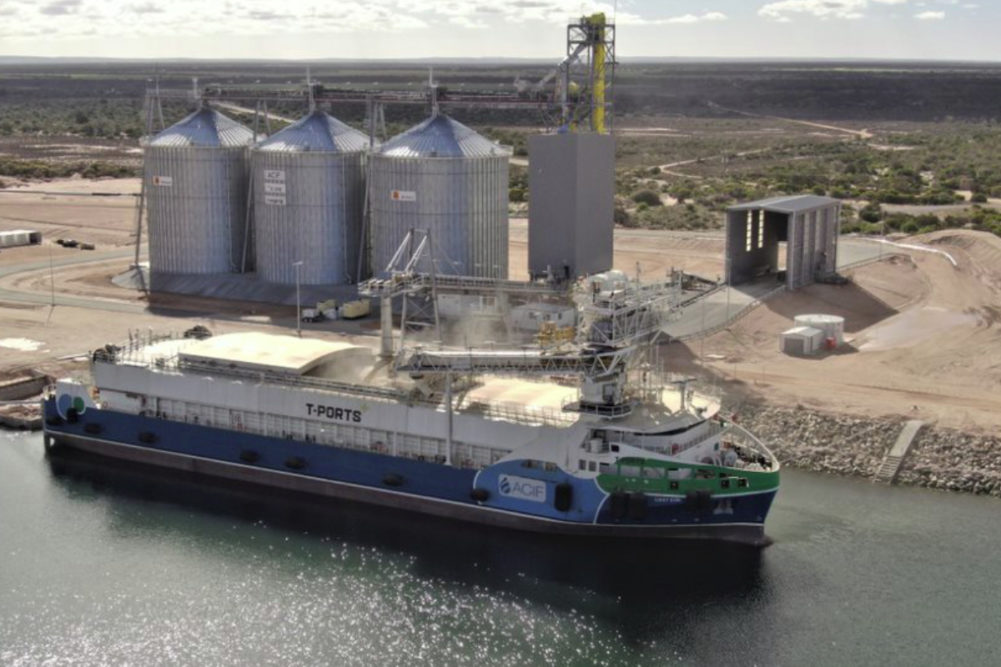EYRE PENINSULA, AUSTRALIA — Funds from a recently completed senior credit facility will allow the Lucky Bay transhipment port on Eyre Peninsula in Australia to grow in its role as alternative grain supply chain for grain growers and other commodity suppliers.
Merricks Capital completed the senior credit facility with ICAM Duxton Port Infrastructure Trust (IDPIT), which developed the port.
The infrastructure, which is operated by T-Ports, includes a shallow-water port, grain storage bunkers and an innovative self-discharging transhipment vessel that is used to transport grain from the port to the ocean-going vessel at sea.
It plays a strategic role in the agricultural supply chain as it provides cheaper, alternative direct export market access for commodity producers in South Australia and beyond.
Adrian Redlich, Merricks Capital chief executive officer, said IDPIT is a prime example of its strategic, hard asset backed lending strategy.
“Our investment represents the intersection of our strategy, capital and experience in financing strategically important agricultural supply chain assets,” Redlich said. “We have been strongly supported by investors in our Agriculture Credit Fund and have significant capital available to deploy in 2022.”
Rob Chapman, chair of the IDPIT, said the A$40 million refinance will support the continued growth of T-Ports as it looks to attract more producers.
“T-Ports has been operating for almost two years and our Lucky Bay port has proven to be a supply chain partner for nearly 300 South Australian grain growers,” Chapman said. “Our vision is to use the transhipment technology and shallow-water port model to unlock stranded resources and commodities nationally.”
This investment follows the launch of the Merricks Capital Agriculture Credit Fund in June 2021, which has raised close to A$200 million since its launch to support the agriculture supply chain across Australia and New Zealand.
Redlich said Merricks Capital continues to be well positioned to balance the needs of the agriculture industry and manage the complexities of a direct lending strategy.






